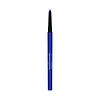What's inside
What's inside
 Key Ingredients
Key Ingredients

 Benefits
Benefits

 Concerns
Concerns

 Ingredients Side-by-side
Ingredients Side-by-side

Isododecane
EmollientPolyethylene
AbrasiveSynthetic Wax
AbrasiveCalcium Sodium Borosilicate
Ethylene/Propylene Copolymer
AbrasiveBis-Diglyceryl Polyacyladipate-2
EmollientHydrogenated Polydicyclopentadiene
Polybutene
Silica
AbrasiveAloe Barbadensis Leaf Extract
EmollientCarthamus Tinctorius Seed Oil
MaskingPersea Gratissima Oil
Skin ConditioningPhytosterols
Skin ConditioningOlea Europaea Fruit Oil
MaskingTocopheryl Acetate
AntioxidantAscorbyl Palmitate
AntioxidantTin Oxide
AbrasivePentaerythrityl Tetra-Di-T-Butyl Hydroxyhydrocinnamate
AntioxidantOctyldodecanol
EmollientSynthetic Fluorphlogopite
Sorbitan Oleate
EmulsifyingMica
Cosmetic ColorantCI 77891
Cosmetic ColorantIron Oxides
CI 77510
Cosmetic ColorantIsododecane, Polyethylene, Synthetic Wax, Calcium Sodium Borosilicate, Ethylene/Propylene Copolymer, Bis-Diglyceryl Polyacyladipate-2, Hydrogenated Polydicyclopentadiene, Polybutene, Silica, Aloe Barbadensis Leaf Extract, Carthamus Tinctorius Seed Oil, Persea Gratissima Oil, Phytosterols, Olea Europaea Fruit Oil, Tocopheryl Acetate, Ascorbyl Palmitate, Tin Oxide, Pentaerythrityl Tetra-Di-T-Butyl Hydroxyhydrocinnamate, Octyldodecanol, Synthetic Fluorphlogopite, Sorbitan Oleate, Mica, CI 77891, Iron Oxides, CI 77510
Talc
AbrasiveCaprylic/Capric Triglyceride
MaskingZinc Stearate
Cosmetic ColorantPtfe
Ethylene/Acrylic Acid Copolymer
Emulsion StabilisingPolyethylene Terephthalate
Calcium Aluminum Borosilicate
Calcium Sodium Borosilicate
Sodium Dehydroacetate
PreservativePhenoxyethanol
PreservativeSynthetic Fluorphlogopite
Silica
AbrasiveSorbic Acid
PreservativeAlumina
AbrasivePolyurethane-33
Tin Oxide
AbrasiveAcrylates Copolymer
Polybutylene Terephthalate
Polylactic Acid
AbrasivePolymethyl Methacrylate
Stearic Acid
CleansingCalcium Stearate
Cosmetic ColorantMagnesium Stearate
Cosmetic ColorantMica
Cosmetic ColorantCI 77891
Cosmetic ColorantCI 77491
Cosmetic ColorantCI 77492
Cosmetic ColorantCI 77499
Cosmetic ColorantCI 77742
Cosmetic ColorantCI 77007
Cosmetic ColorantCI 77163
Cosmetic ColorantCI 75470
Cosmetic ColorantCI 77400
Cosmetic ColorantCI 77000
Cosmetic ColorantCI 42090
Cosmetic ColorantCI 77288
Cosmetic ColorantCI 77510
Cosmetic ColorantCI 19140
Cosmetic ColorantCI 77289
Cosmetic ColorantTalc, Caprylic/Capric Triglyceride, Zinc Stearate, Ptfe, Ethylene/Acrylic Acid Copolymer, Polyethylene Terephthalate, Calcium Aluminum Borosilicate, Calcium Sodium Borosilicate, Sodium Dehydroacetate, Phenoxyethanol, Synthetic Fluorphlogopite, Silica, Sorbic Acid, Alumina, Polyurethane-33, Tin Oxide, Acrylates Copolymer, Polybutylene Terephthalate, Polylactic Acid, Polymethyl Methacrylate, Stearic Acid, Calcium Stearate, Magnesium Stearate, Mica, CI 77891, CI 77491, CI 77492, CI 77499, CI 77742, CI 77007, CI 77163, CI 75470, CI 77400, CI 77000, CI 42090, CI 77288, CI 77510, CI 19140, CI 77289
Ingredients Explained
These ingredients are found in both products.
Ingredients higher up in an ingredient list are typically present in a larger amount.
Calcium Sodium Borosilicate is a bulking agent. It is considered a borosilicate glass; it is composed of powder or flakes of calcium and sodium borosilicates.
This ingredient is used to add volume, shine, and color to products. You'll most likely find this ingredient in makeup products.
According to in-vivo and ex-vivo studies done by a manufacturer, this ingredient works well with UV filters:
Learn more about Calcium Sodium BorosilicateThis ingredient is used to impart a blue color. It is not water-soluble.
It goes by two different names:
1. Ferric Ferrocyanide: a synthetic dark blue pigment
2. Ferric Ammonium Ferrocyanide: a synthetic blue pigment, also called Prussian blue
In the EU, both of these colors must be labeled as 'CI 77510'.
Learn more about CI 77510Ci 77891 is a white pigment from Titanium dioxide. It is naturally found in minerals such as rutile and ilmenite.
It's main function is to add a white color to cosmetics. It can also be mixed with other colors to create different shades.
Ci 77891 is commonly found in sunscreens due to its ability to block UV rays.
Learn more about CI 77891Mica is a naturally occurring mineral used to add shimmer and color in cosmetics. It can also help improve the texture of a product or give it an opaque, white/silver color.
Serecite is the name for very fine but ragged grains of mica.
This ingredient is often coated with metal oxides like titanium dioxide. Trace amounts of heavy metals may be found in mica, but these metals are not harmful in our personal products.
Mica has been used since prehistoric times throughout the world. Ancient Egyptian, Indian, Greek, Roman, Aztec, and Chinese civilizations have used mica.
Learn more about MicaSilica, also known as silicon dioxide, is a naturally occurring mineral. It is used as a fine, spherical, and porous powder in cosmetics.
Though it has exfoliant properties, the function of silica varies depending on the product.
The unique structure of silica enhances the spreadability and adds smoothness, making it a great texture enhancer.
It is also used as an active carrier, emulsifier, and mattifier due to its ability to absorb excess oil.
In some products, tiny microneedles called spicules are made from silica or hydrolyzed sponge. When you rub them in, they lightly polish away dead skin layers and enhance the penetration of active ingredients.
Learn more about SilicaSynthetic Fluorphlogopite is the synthethic version of mica. It consists of fluorine, aluminum and silicate.
Synthetic Fluorphlogopite is used to add volume to products.
It is considered non-irritating on the skin.
Learn more about Synthetic FluorphlogopiteTin Oxide is an inorganic oxide used to add opacity and volume to a product. In nature, it is already found in mineral form. The main ore of tin is an opaque and shiny mineral called casseterite.
Tin Oxide helps remove translucency in a product, or make it more opaque. Besides adding opacity, tin oxide is used for bulking to add volume.